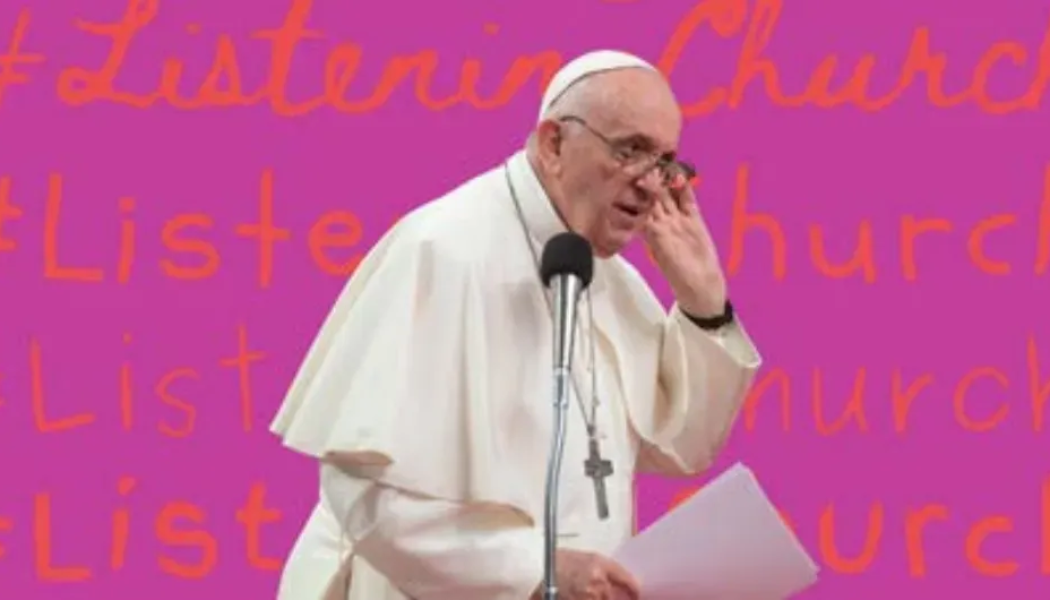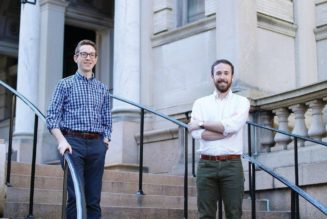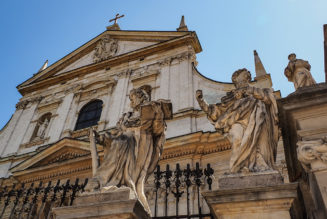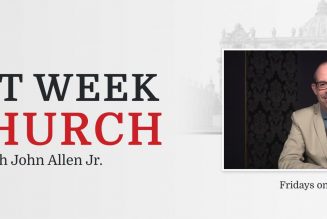At the end of the local phase of the Church’s synod on synodality, organizers at the USCCB have said the Church’s experience of the process is more important than the documents it has produced.
USCCB organizers also acknowledged that consultation sessions in recent months had only limited participation – with many Catholics wholly unaware they were taking place – but said they view those sessions as only a start to the potential of synodal engagement in the Church.
They also addressed criticism of synod documents, explaining that in their view, the report’s drafters worked hard to avoid partiality or agendas, and aimed to see their documents reflect the reports of U.S. dioceses.
“The whole experience of synodality is one of openness, and of having the process be driven – God willing – by the inspiration of the Holy Spirit,” Richard Coll, a USCCB synod coordinator, told The Pillar last week.
“From the opening meeting of the Vatican to launch this process, we have heard the importance of one notion in particular — ‘don’t focus on the outcome or the product, focus on the process,’” Coll added.
The synod organizer spoke with The Pillar after the release of the USCCB’s “national synthesis document,” which aimed to summarize a year-long process of consultations and discernments sessions in parishes and dioceses across the country — part of a two-year global Catholic consultation called for in 2021 by Pope Francis.
The consultation, which will culminate with a Vatican meeting of bishops in October 2023, is focused on the notion of synodality — the idea of prayerful conversation, listening, and discernment of God’s will in the Church’s life.
During the course of his pontificate, Pope Francis has raised the issue of synodality frequently. Synods of bishops have been central moments of his pontificate, and the pope’s announcement of the global synod on synodality has been seen as a capstone project of his papacy.
Diocesan synods – broad consultation meetings held at the local level – are called for both by the Second Vatican Council and the Church’s Code of Canon Law. Several U.S. dioceses have undertaken such synods in local years.
But in 2021 – while several such synods were actually underway in American dioceses – the pope called for a global synod process, which would aim to engage both practicing and disaffected Catholics around the world.
Vatican organizers explained last year that the process would begin at the parish and diocesan levels, and then encompass a “continental phase,” ahead of the pope’s October 2023 meeting with bishops in Rome.
But while the pope expressed hope that local synods would have broad engagement, they have mostly seen low levels of participation in the West. While one Nigerian diocese told The Pillar that more than 20% of its Catholics participated in consultative sessions, participation rates in most countries have hovered at around 1% of Catholics — and fewer than 1% of self-identified American Catholics took part in the U.S. process, either by online surveys or in-person meetings.
Julia McStravog is a consultant to the USCCB and the project manager of the conference’s synod organizing team.
McStravog told The Pillar that despite low participation rates, she’s focused on the future of “synodality” — and hopes to encourage more of it in the day-to-day governance of the Church.
She told The Pillar that in her view, the purpose of the synod was to encourage a more regular habit of consultative discernment – and listening – among Church leaders.
“We have to strengthen this muscle of synodality, so that it becomes stronger, and it’s something that becomes like memory, and part of what it means to be Church,” she said.
“Some dioceses have already started to implement things to that effect,” McStravog explained.
“Some dioceses started committees in the middle of the synod to investigate [pastoral needs raised by the process. Some dioceses are purposefully bringing the idea of synodality into their plans for the Eucharistic Revival… Some are planning to continue their listening sessions, some bishops have committed to quarterly listening sessions with their diocesan folks,” she explained.
“That’s not everywhere, but things are kind of starting, and I think they’re going to be small at first, but I’m excited.”

McStravog explained that when she trained diocesan leaders ahead of the synodal process, she emphasized that the Vatican guidance on the subject might not seem immediately attainable — but she said it was important to get started.
“In the beginning I would talk about the vademecum being aspirational, realizing we have all these limitations. And so if we were a perfectly synodal church, we would hit every single one of those marks in the vademecum,” McStravog said.
“I think there was some skepticism among the clergy in this first initial phase, that we’re aware of, and we’re working on,” she explained.
“Also, I tried to be mindful that our diocesan folks and our parish folks are kind of overworked and overwhelmed. And this was a big ask in a short amount of time, with most folks having limited capacity.”
“But the point is that we needed to start exercising the synodal muscle, and so it’s not perfect — this process was not perfect, but if we really are supposed to be a synodal Church, the ‘Church of the third millennium’ as Pope Francis called it, we need to start practicing.”
“Any expectation that this process would’ve been perfect from the get-go, after so long of not practicing synodality as a regular part of Church life, is kind of misguided,” McStravog added.
For his part, Coll said that he thinks synodality is already an operative notion in the Church. He said that the synod is aiming to help bishops build on strengths that have sometimes gone unrecognized.
“This isn’t the first time that synodality has been expressed in the life of the Church,” Coll said.
Diocesan and parish councils “are very good examples of its application at various levels, involving the laity, as well as consecrated men and women and clergy. I think the synod on synodality is trying to build on that, so that it becomes even more well-known, and well-applied, within the Church,” he said.
“And let’s also make sure that synodality isn’t limited to the usual participants, but that outreach to the margins takes place.”
Coll told The Pillar he is not yet certain what more synodality might mean at the bishops’ conference itself — but he things the idea will have effect among the bishops.
“The influence of synodality [at the USCCB] could be that the dialogue will be a richer one, that synodality might enrich the dialogue between staff and the bishops, and among the bishops themselves.”
“We already seeing how the bishops’ meetings, both the last one in San Diego and the new one coming up in November will provide for greater conversation among themselves and smaller groups trying to reflect the spirit of synodality.”
As he looked ahead, Coll acknowledged the criticisms that emerged in the Church during the first stages of the process.
The organizer acknowledged that the recent diocesan consultations, according to some reports, involved mostly practicing Catholics, and that some groups – including both traditionalist Catholics and some progressive Catholics – said they had not felt invited to participate in the process, or been heard in its sessions.
Some Catholics have suggested they were not even aware of the process, were unable to find information about the synod on synodality in their local parish, or that the process was limited in some places only to invited participants.
Coll said he understands where critics are coming from. He asked for patience.
“I don’t think I would be critical of anybody who has suggestions, comments, criticisms, or observations, because this is a process, this isn’t an end result cast in stone. This is accompanying one another on the journey, which we hope will be a continuing one,” he said.
“And we will continue to learn, and grow, and be sure that as many of those voices that want to be heard are effectively heard. So we’re not critiquing anybody for misgivings they might have, or any concerns they might have had about whether they were able to access as much participating as they wanted.”
“But this is an ongoing journey. And I’m sure we will all be learning about how to better integrate everybody who wants to be heard,” Coll added.
McStravog, on the other hand, said that even while synod organizers are learning, she believes that most Catholics will find something in the national synodal document which reflects their concerns or viewpoints.
“I have trouble thinking that there are people [for whom] no concern was heard, or that no joy was heard or that no hope was heard at all. Perhaps about a particular issue that could be true — but for their entire kind of experience of Church and their love of Church, I think it might be difficult for me to understand that nothing would be heard during the process,” she told The Pillar.

Among some U.S. Catholics, the synod on synodality has been criticized for its style and approach since soon after it was launched. While low participation have been flagged as a problem, the text of the national synthesis document itself has also faced criticism.
In an essay last week, Catholic writer Francis Maier wrote that the USCCB’s summary texts “is crippled by tone and focus.”
“The language has a familiar therapeutic ring,” Maier wrote, “a warm bath in varieties of victimhood, marginalization, ‘pain and anxiety,’ and vulnerability, with the unborn tucked in among LGBTQ+ and other concerns. Listening, healing, walking together, accompaniment: the vocabulary of the current pontificate understandably dominates throughout.
“But the effect is reminiscent of post-sweetener fatigue,” he wrote.
Maier’s essay echoed a concern expressed frequently about the synodal process – that the outcome seemed predetermined to reflect the priorities of Vatican leaders, not of ordinary Catholics.
“The report leaves the reader with the uneasy feeling that it tells the Vatican’s 2023 synod organizers what they already think and want to hear. Regrettably, that same kind of predetermined spirit marked both the 2015 and 2018 synods,” Maier wrote.
But for her part, McStravog told The Pillar that the USCCB took steps to remain impartial when writing its summary report.
Each of the USCCB’s regions – there are 14 – was tasked with developing a summary of the diocesan reports from its territory. A separate report was developed from the input of groups which submitted their own synodal feedback to the bishops’ conference.
The conference, McStravog said, based its own national report on those regional texts — and consulted with regional drafters, most of whom work in diocesan chanceries, and with bishops appointed to a committee by Bishop Daniel Flores, who is chairman of the USCCB’s committee on doctrine.
McStravog said she believes the process was docile to the Holy Spirit.
“I think when you really listen to the Holy Spirit, you can’t hold your own agenda. And so there were times where, personally, I may not have thought a decision was good, or maybe I would’ve done it differently; however, that’s what happens with group discernment and consensus,” she explained.
“And it can be a painstaking process towards consensus where everybody feels that they’ve been heard, that they are valued, that everybody in the room is there listening to the Holy Spirit, and I think setting that tone in our meetings is really helpful,” she added.
McStravog also told The Pillar what’s to expect during the synod on synodality’s continental phase, which is next on the agenda.
During that process, U.S. and Canadian bishops are tasked with working together to provide feedback to the Vatican on a global summary document, which is now in development in Rome. Mexican bishops, though part of North America, have been assigned to work with the bishops of Central and South America during the continental phase.
Among the American and Canadian bishops, McStravog said, the continental phase won’t be a singular meeting of delegates for deliberation. It will instead be a mostly virtual process, organized by committees from the U.S. and Canadian episcopal conferences, and involving bishops, priests, religious, and laity.
Coll said that approach is in line with the pope’s intentions.
“This experience has been a process rather than a specific event or a product. So this [phase] will engage a dialogue at the national level through the instrumentalities of the regions, and then continued dialogue, reflection, and prayerful consideration with our Canadian colleagues, that will then produce the report to be submitted,” Coll explained.
The organizer said that Catholics who did not participate in local or diocesan sessions might find a place in the process during its continental phase.
“We’ve really tried to take to heart the very strong recommendation from the Vatican that those who might not otherwise naturally be involved in these processes, for whatever reason, be sought out and that their wisdom be incorporated. So we want to do that, and we’re hopeful that this process will be able to continue to tap into the voices of those who have important things to say,” Coll added.
As they prepare for the next stage of the process, McStravog and Coll said the USCCB wants to learn from the criticisms the synod’s faced among U.S. Catholics.
“Could things have been better?” McStravog reflected.
“Of course. Everything can always be improved, but part of that is the learning, and the process,” she said.
“And there are voices that have been missed. But the synod process is not over, and even when it is over in 2023, it’s not over.”
Join Our Telegram Group : Salvation & Prosperity









